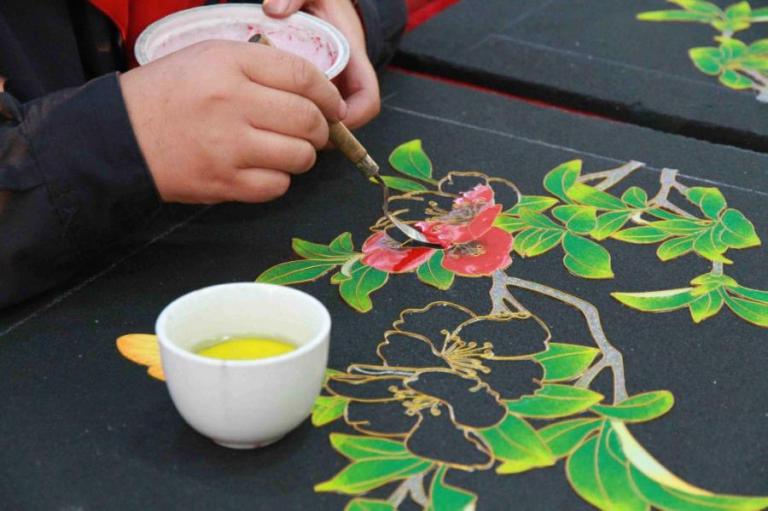Handicrafts in China
2 min readHandicrafts
Indeed you can tell a lot about a nation from its handicrafts. The handicraft industry at its very beginningmarked its civilization. It then kept evolving and finally appears gorgeous today. When you come upon wonderful items, you cannot help wondering about their past. You may also wonder why they have existed and the roles they have played in history.
Actually, Chinese handicrafts are created to be living things. They have been the highest pursuit of countless artisans. You may think that their making norms are abstract, intricate, or mysterious, but when you look closely Picture 12-1 Phoenix Singing Towards at some works, you will feel an undercurrent of power the Sun flowing in them. That’s what the oriental art suggests to its viewer.
Chinese handicrafts have a wide variety, ranging from papercutting to woodblock picture, leather sillouette, silk embroidery, pottery carving and so on. From these splendid handicrafts, you will gain a better understanding of the Chinese culture.

Pottery and Porcelain
The history of pottery-making in China, for the most part, is much like that of the rest of the world. Improvements were made gradually over thousands of years, and the Chinese took the lead in the field.
Ceramics began in China 6,000 years ago during the Neolithic Age, whose advent was marked, among other things, by the invention of pottery.! The earliest earthenware was molded by hand; the potter’s wheel came much later. At the beginning the clay was fired at a temperature of some 500℃~600℃.Painted pottery began to be known during the period ofYangshao and Longshan Cultures.Depictions of human beings emerged during the Warring States Period and were very popular under the Qin and Han Dynasties,which created entire armies of clay statues.The clay figurines of tomb offerings serve as important archeological objects to reproduce the splendor of ancient China.From the Jin Dynasty onwards,vessels andobjects were glazed,mostly with yellow,green and brown colors.Typical for Tang ceramics are the three colors:white of the vessel itself,therefore called whiteware,dark green and brownish yellow.Song ceramics are only one-colored,either with a soft green or glazed white.But during the Tang and Song Dynasties,porcelain developed as an important ceramic product,and the taste of colors also changed to the world-famous typical blue-and-white ceramic chinaware,which fully developed during the Yuan Dynasty.
Chinese porcelain is known worldwide for its beautiful white color,its thin walls and its clear belllike sound.The first real porcelain in China was made during the Tang Dynasty,butindustrial manufacturing didn’t start until the Yuan Period,when Marco Polo traveled around China.









